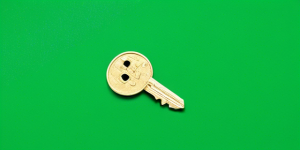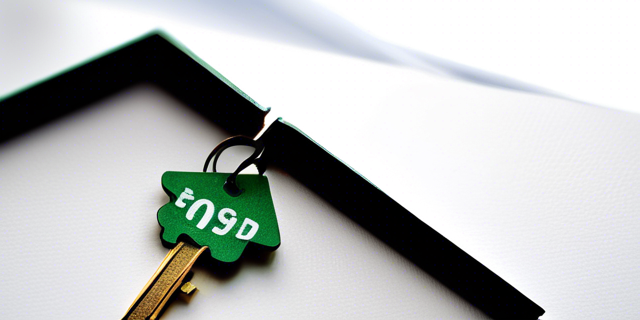Low Down Payment Mortgage Options 2024
Low Down Payment Mortgage Options: Unlock Your Dream Home with Minimal Upfront Costs

For many aspiring homeowners, the prospect of saving up for a substantial down payment can feel like an insurmountable obstacle. However, the reality is that there are numerous low down payment mortgage options available, making homeownership more accessible than ever before. In this comprehensive guide, we’ll explore these alternatives, demystifying the process and empowering you to take that crucial first step towards realizing your dream of owning a home.
The Benefits of Low Down Payment Mortgages
Before delving into the specifics, let’s discuss why low down payment mortgages are such a game-changer. Traditionally, lenders have required a down payment of 20% or more, which can be a significant financial hurdle, especially for first-time buyers or those with limited savings. Low down payment mortgages alleviate this burden, allowing you to purchase a home with a smaller upfront investment.
One of the primary advantages of these mortgage options is that they open up homeownership opportunities to a broader range of individuals. By requiring a smaller down payment, you can potentially enter the housing market sooner, build equity faster, and enjoy the numerous benefits of homeownership, such as tax deductions and long-term financial stability.
FHA Loans: The Pioneering Low Down Payment Option

The Federal Housing Administration (FHA) loan program has been a trailblazer in making homeownership more accessible. With an FHA loan, you can secure a mortgage with as little as 3.5% down, a significant departure from the traditional 20% requirement. This program is particularly beneficial for first-time homebuyers, as it offers flexible credit requirements and allows for lower credit scores than conventional loans.
To qualify for an FHA loan, you’ll need to meet certain criteria, such as having a steady employment history and a decent credit score (typically around 580 or higher for the 3.5% down payment option). Additionally, you’ll be required to pay mortgage insurance premiums, which help protect the lender in case of default.
Conventional 97% Mortgage: A Private-Sector Solution
Not to be outdone, the private sector has responded with its own low down payment mortgage option: the conventional 97% mortgage. As the name implies, this loan allows you to finance up to 97% of the home’s value, requiring only a 3% down payment.
One of the key advantages of the conventional 97% mortgage is that it doesn’t require mortgage insurance if your credit score is high enough (typically above 760). This can result in significant savings over the life of the loan, as mortgage insurance can be a substantial expense.
To qualify for a conventional 97% mortgage, you’ll generally need a credit score of at least 620, along with a stable employment history and a debt-to-income ratio within acceptable limits.
VA Loans: Serving Those Who Serve
If you’re an active-duty military member, veteran, or eligible surviving spouse, the Department of Veterans Affairs (VA) offers a fantastic low down payment mortgage option – the VA loan. With a VA loan, you can secure a mortgage with zero down payment, making homeownership an immediate possibility.
VA loans are designed to provide affordable housing opportunities for those who have served our country. In addition to the no-down-payment benefit, VA loans often offer competitive interest rates and don’t require private mortgage insurance. However, it’s important to note that you’ll need to meet specific service requirements and obtain a Certificate of Eligibility to qualify.
USDA Loans: A Rural Development Initiative

For those interested in purchasing a home in eligible rural areas, the United States Department of Agriculture (USDA) offers a unique low down payment mortgage option through its Rural Development program. With a USDA loan, you can potentially secure a mortgage with no down payment required.
USDA loans are designed to promote homeownership in rural communities and support economic development in these areas. To qualify, you’ll need to meet specific income limits and purchase a home within an eligible rural area as defined by the USDA.
State and Local Down Payment Assistance Programs
In addition to the federal programs mentioned above, many state and local governments offer down payment assistance programs to help make homeownership more attainable for their residents. These programs can provide grants, forgivable loans, or other forms of financial assistance to cover a portion or all of the required down payment.
While the eligibility requirements and assistance amounts vary by location, these programs often target first-time homebuyers, low-to-moderate-income households, or those purchasing homes in designated revitalization areas. It’s worth exploring the options available in your state or city, as these programs can significantly reduce the upfront costs associated with buying a home.
Navigating the Low Down Payment Mortgage Process

Once you’ve identified the low down payment mortgage option that best suits your circumstances, it’s essential to understand the process and prepare accordingly. Here are some key steps to keep in mind:
- Check Your Credit Score and Reports: Lenders will evaluate your credit profile to assess your creditworthiness. Review your credit reports and address any errors or outstanding issues that could negatively impact your score.
- Calculate Your Debt-to-Income Ratio: Lenders will also consider your debt-to-income ratio, which measures the amount of your monthly gross income that goes towards paying recurring debts. Aim to keep this ratio within acceptable limits, typically below 43%.
- Gather Documentation: Be prepared to provide documentation such as pay stubs, tax returns, bank statements, and employment verification to support your mortgage application.
- Get Pre-Approved: Obtaining a pre-approval letter from a lender can give you a competitive edge in the home-buying process and demonstrate your creditworthiness to sellers.
- Shop Around for the Best Rates and Terms: Don’t settle for the first mortgage offer you receive. Compare rates, fees, and terms from multiple lenders to find the most favorable deal.
- Consider Working with a Mortgage Broker or Loan Officer: These professionals can guide you through the process, help you understand your options, and potentially find deals that you may not have access to on your own.
Remember, low down payment mortgages often come with additional requirements or fees, such as mortgage insurance premiums or higher interest rates. It’s crucial to understand these costs and factor them into your long-term financial planning.
The Importance of Financial Preparedness

While low down payment mortgages can make homeownership more accessible, it’s essential to approach the process with financial prudence. Owning a home comes with ongoing expenses beyond the monthly mortgage payment, such as property taxes, insurance, maintenance, and repairs.
Before committing to a mortgage, ensure that you have a solid financial foundation and a comprehensive understanding of the associated costs. Consider creating a budget that accounts for these expenses and maintain an emergency fund to cover unexpected repairs or financial setbacks.
Additionally, it’s crucial to establish a savings plan for future costs, such as potential renovations or upgrades to your home. Homeownership is a long-term investment, and proper financial planning can help you maximize the benefits and minimize the risks.
Conclusion
Low down payment mortgage options have revolutionized the homebuying process, making the dream of homeownership a reality for countless individuals and families. Whether you’re a first-time buyer, have limited savings, or fall into a specific category like military personnel or rural residents, there is likely a program tailored to your needs.
However, it’s essential to approach the process with due diligence, understanding the requirements, costs, and long-term financial implications of each option. By educating yourself, seeking professional guidance, and maintaining financial responsibility, you can confidently navigate the low down payment mortgage landscape and unlock the doors to your dream home.
Frequently Asked Questions (FAQs)
- What is the minimum credit score required for low down payment mortgages? The minimum credit score requirements vary depending on the specific mortgage program. For FHA loans, a credit score of 580 or higher is typically required for the 3.5% down payment option. Conventional 97% mortgages generally require a credit score of at least 620, while VA and USDA loans have more flexible credit requirements.
- Can I use gift funds for the down payment? Yes, in most cases, you can use gift funds from eligible sources (such as family members or close friends) to cover part or all of the required down payment. However, you’ll need to provide documentation to verify the source and legitimacy of the gift funds.
- Are there income limits for low down payment mortgage programs? Some programs, such as the USDA loan, have income limits based on the area’s median income levels. Other programs, like FHA and conventional loans, do not have strict income limits but may consider you
- Can I use a low down payment mortgage to purchase an investment property? Most low down payment mortgage programs are designed for primary residences and have strict occupancy requirements. However, some conventional loan programs may allow for lower down payments on investment properties, typically around 15-20% down.
- What happens if I need to sell my home shortly after purchasing with a low down payment mortgage? If you need to sell your home within a few years of purchasing with a low down payment mortgage, you may face challenges. You may owe more on the mortgage than the home is worth (known as being “upside down” or having negative equity), making it difficult to sell without bringing cash to the closing table. It’s essential to consider your long-term plans and financial stability before committing to a low down payment mortgage.

